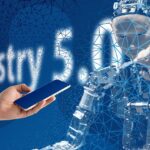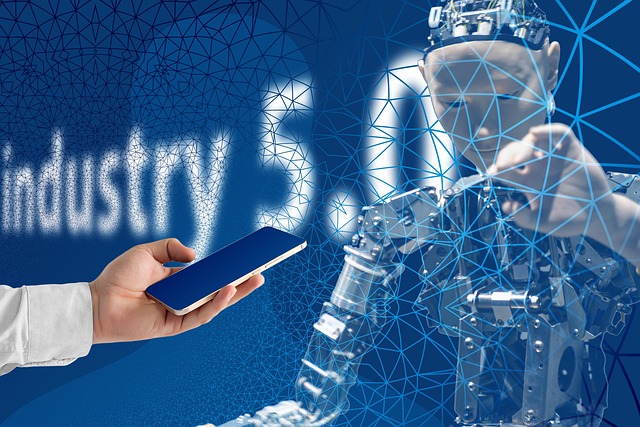# Navigating the AI Revolution: Key Trends and Innovations Transforming Technology and Society
The advent of artificial intelligence (AI) has ushered in a transformative era across various sectors, reshaping how we interact with technology and each other. As AI continues to evolve, understanding its key trends and innovations becomes essential for businesses, policymakers, and individuals alike. This article explores the most significant developments in AI and their implications for technology and society.
## The Rise of Generative AI
Generative AI has emerged as one of the most groundbreaking innovations in recent years. Unlike traditional AI, which primarily focuses on data analysis and predictive modeling, generative AI can create new content, whether it be text, images, music, or even video. The rise of models like OpenAI’s GPT-3 and DALL-E has demonstrated the potential for machines to produce human-like creativity, blurring the lines between man-made and machine-generated content.
In practical applications, generative AI is revolutionizing industries such as entertainment, marketing, and design. For instance, filmmakers can leverage AI to generate scripts or storyboards, while advertisers can create personalized campaigns at scale. The implications for content creation are profound, as businesses can now produce tailored materials more efficiently than ever before. However, this rapid advancement also raises ethical concerns regarding copyright, authenticity, and the potential for misinformation.
Moreover, generative AI’s impact extends beyond creativity; it is also making strides in healthcare, where AI systems can synthesize patient data to generate personalized treatment plans. As this technology matures, the challenge will be to harness its capabilities while addressing the ethical dilemmas it introduces.
## AI and Automation: Transforming the Workforce
Automation powered by AI is another significant trend reshaping the workforce. As organizations strive for efficiency and cost reduction, the integration of AI technologies into various job functions has become increasingly prevalent. From manufacturing to customer service, AI-driven automation is enhancing productivity by streamlining operations and reducing human error.
Interestingly, the impact of AI on employment is a double-edged sword. On one hand, automation can lead to job displacement in certain sectors, particularly among low-skilled workers. Tasks that were once performed by humans are now being handled by AI systems, resulting in potential job losses and economic disruption. On the other hand, the demand for skilled workers who can develop, implement, and manage AI technologies is surging. This shift necessitates a reevaluation of workforce training and education to equip individuals with the skills needed for the jobs of tomorrow.
Furthermore, companies are beginning to recognize the importance of human-AI collaboration. Rather than viewing AI as a replacement for human workers, organizations are exploring how AI can augment human capabilities. This collaborative approach may lead to new job roles that combine human intuition and creativity with AI’s analytical prowess, fostering a more resilient and adaptable workforce.
## Ethical Considerations and Governance
As AI technologies proliferate, ethical considerations and governance frameworks are becoming paramount. The rapid deployment of AI raises questions about accountability, fairness, and transparency. Concerns about biased algorithms, data privacy, and the potential misuse of AI technologies have prompted calls for regulatory measures to ensure responsible AI development and deployment.
Notably, various organizations and governments are beginning to establish guidelines and frameworks to address these ethical challenges. For instance, the European Union has proposed regulations aimed at creating a legal framework for AI that emphasizes transparency and accountability. Such initiatives seek to mitigate risks while fostering innovation, striking a balance between technological advancement and societal well-being.
Moreover, the role of stakeholders in shaping AI governance is crucial. Collaboration between governments, businesses, and civil society can lead to more inclusive and effective regulatory frameworks. Engaging diverse perspectives ensures that the development of AI technologies aligns with societal values and addresses the needs of all stakeholders.
In addition to regulatory efforts, the importance of ethical AI design cannot be overstated. Developers and organizations are increasingly prioritizing fairness, accountability, and transparency in their AI systems. By embedding ethical considerations into the design process, the industry can work towards mitigating bias and enhancing the trustworthiness of AI applications.
## Conclusion: Embracing the AI Future
Navigating the AI revolution requires a multifaceted approach that acknowledges both the opportunities and challenges presented by this transformative technology. Generative AI is redefining creativity, while automation is reshaping the workforce landscape. Ethical considerations and governance frameworks are essential for ensuring that AI technologies are developed and deployed responsibly.
As we move forward, fostering collaboration among stakeholders will be vital for harnessing AI’s potential while safeguarding societal interests. By embracing innovation, prioritizing ethical considerations, and investing in education and workforce development, we can navigate the complexities of the AI revolution and build a future where technology serves humanity’s best interests. The journey is just beginning, and the choices we make today will shape the AI landscape for generations to come.











